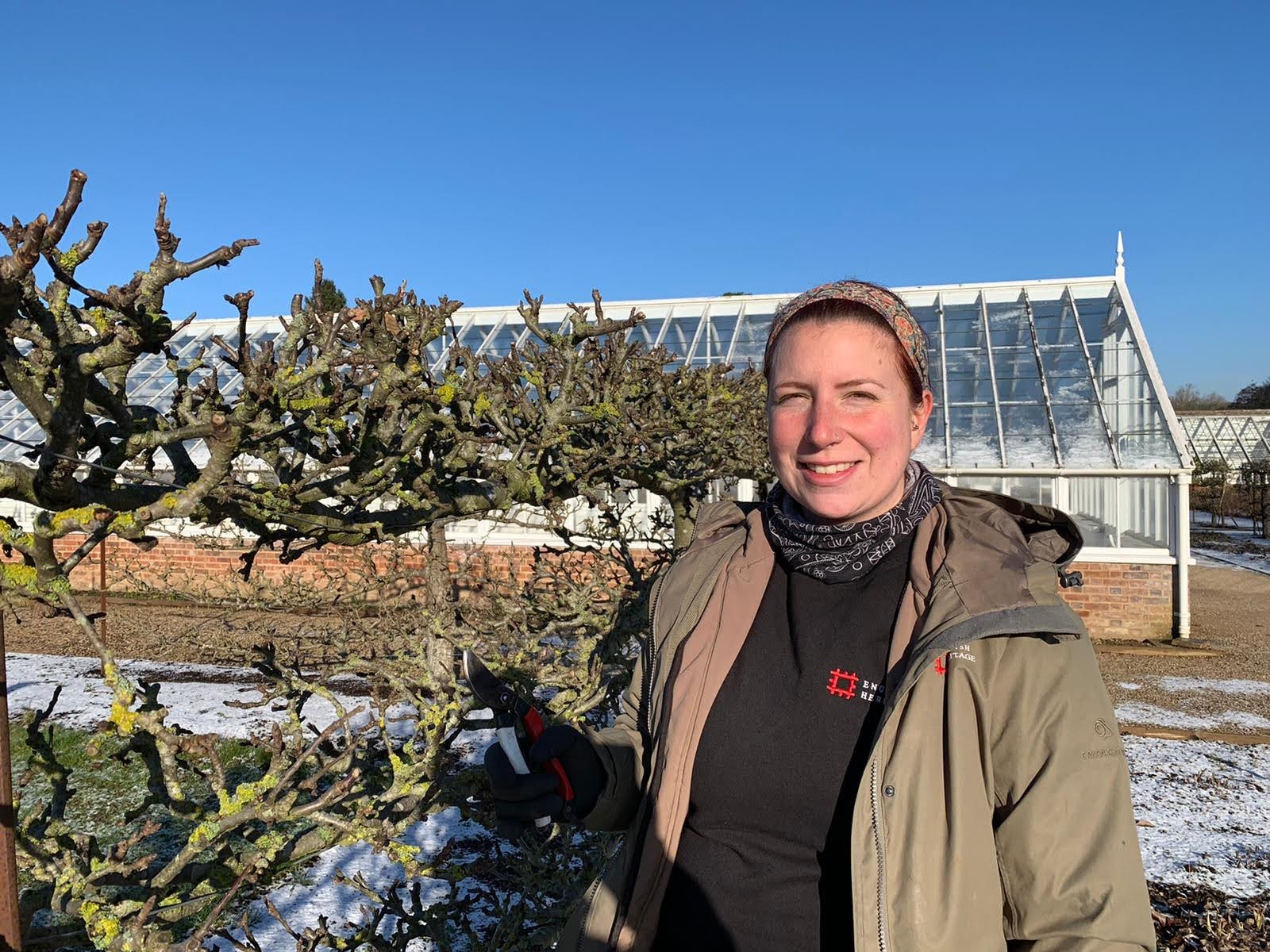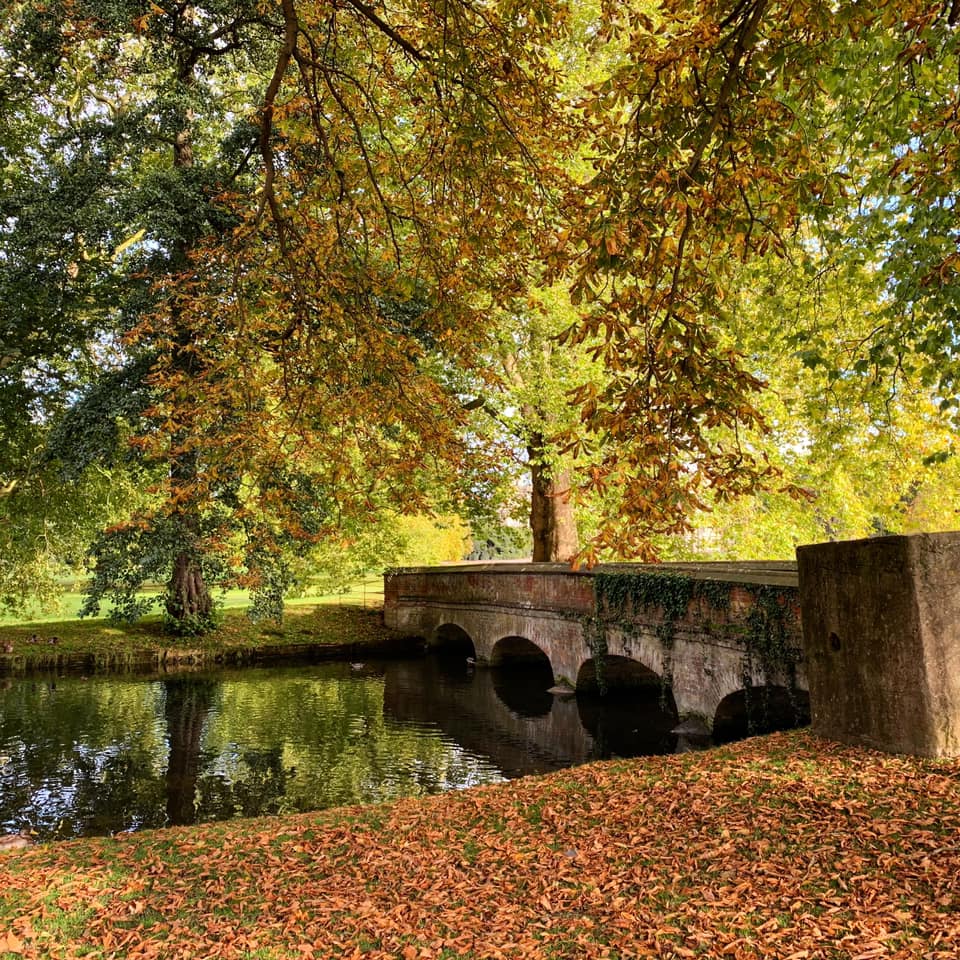It’s National tree week! Across the UK, many of us will be planting trees as the start of the winter tree planting season begins. At Audley End we’re excited to be planting some new trees as part of the Queen’s Green Canopy Project, to celebrate the Queen’s Platinum Jubilee and her 70 years on the throne.
“Plant a tree for the Jubilee”
Our garden team will be planting an oak tree (Quercus robur), which replaces a large historic oak tree that had to be felled a few years ago. The previous tree was a veteran oak of considerable age, with an OS map for Essex, dated 1877, showing the oak, which was already a substantial size at this time. We will also be planting an Indian Chestnut tree (Aesculus indica) to replace a 20th century Horse Chestnut (Aesculus hippocastanum). We have chosen an Indian Chestnut as Horse Chestnuts are currently being ravaged by a Leaf Miner which bores through leaves leaving them dry, crisp and brown, leading to premature leaf drop. Trees may be completely bare by autumn. Horse Chestnuts across the country are also dying across the country from a bacteria called Bleeding canker (Pseudomonas syringae pv. Aesculi) which causes the affected bark to bleed a dark sticky fluid. Indian Chestnuts have beautiful pink flowers and more significantly suffer much less from Leaf Miner and Bleeding canker damage, enabling a stronger healthier plant to thrive for future generations to enjoy. This sustainable forward-looking ethos connects with the Queen’s Green Canopy Project’s ambition of creating a green legacy for years to come.
Replanting both of these trees is consistent with our landscape principles at Audley End, which is to maintain a strong structural landscape design typical of the 18th century ‘English Landscape Style’ created by Lancelot ‘Capability’ Brown. Brown came to Audley End in 1763 and remodelled the park for owner Sir John Griffin Griffin. This new scheme included widening and changing the course of the River Cam through the estate, building a ha-ha (sunken wall) to enclose livestock whilst perpetuating the illusion of rolling lawn, planting clumps of trees and relaying the lawns around the house. Much of this work can still be seen on a visit to Audley End gardens today.
“So what are we doing to care for our trees at this time of year?”
As well as a sweeping landscape of lakes, woods, trees, lawn, drives and temples, Audley End is also famed for its 2.5 acre organic walled kitchen garden. Within our kitchen garden we look after over 100 different varieties of apple tree with mini orchards containing pear and plum trees. We train many of our fruit trees into different forms including espalier, cordon, fans and Belgian fences which promote good fruit development, provide interest for visitors, as well as enabling easy harvesting.
At this time in the season we ensure that the bases of trees are weed-free, fed with granular, slow release plant fertiliser and mulched with compost and woodchip which helps to suppress weeds and retain moisture levels, keeping our trees well watered and healthy. The kitchen garden team is gearing up for the winter pruning of our apple and pear trees. Apple and pear trees trained as free-standing bushes are best pruned every winter to ensure a good cycle of fruiting wood. The aim is to create an open goblet shape allowing good airflow with a decent framework to support the fruit. Remember to always use clean and sharp secateurs, removing crossing, dead, diseased, damaged and dying branches first.
So now you have an idea about how to look after trees, why not consider planting a tree of your own, in your garden, at a local school, the allotment or community green space. Join the project and help to create a greener, happier environment for us all. You’ll be inspired by all of the trees being planted all over the country by so many individuals, groups, schools and companies. To find out where these trees have been planted and by whom, check out the QGCP map which can be found here and don’t forget to add your tree to the map!

Written by our English Heritage Ambassador Kelly Fowler
